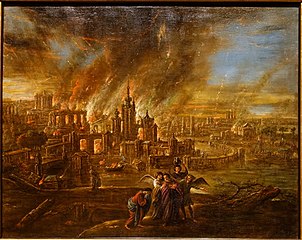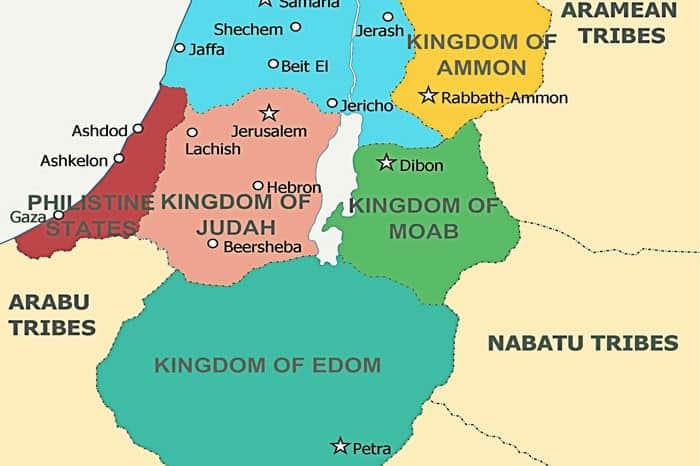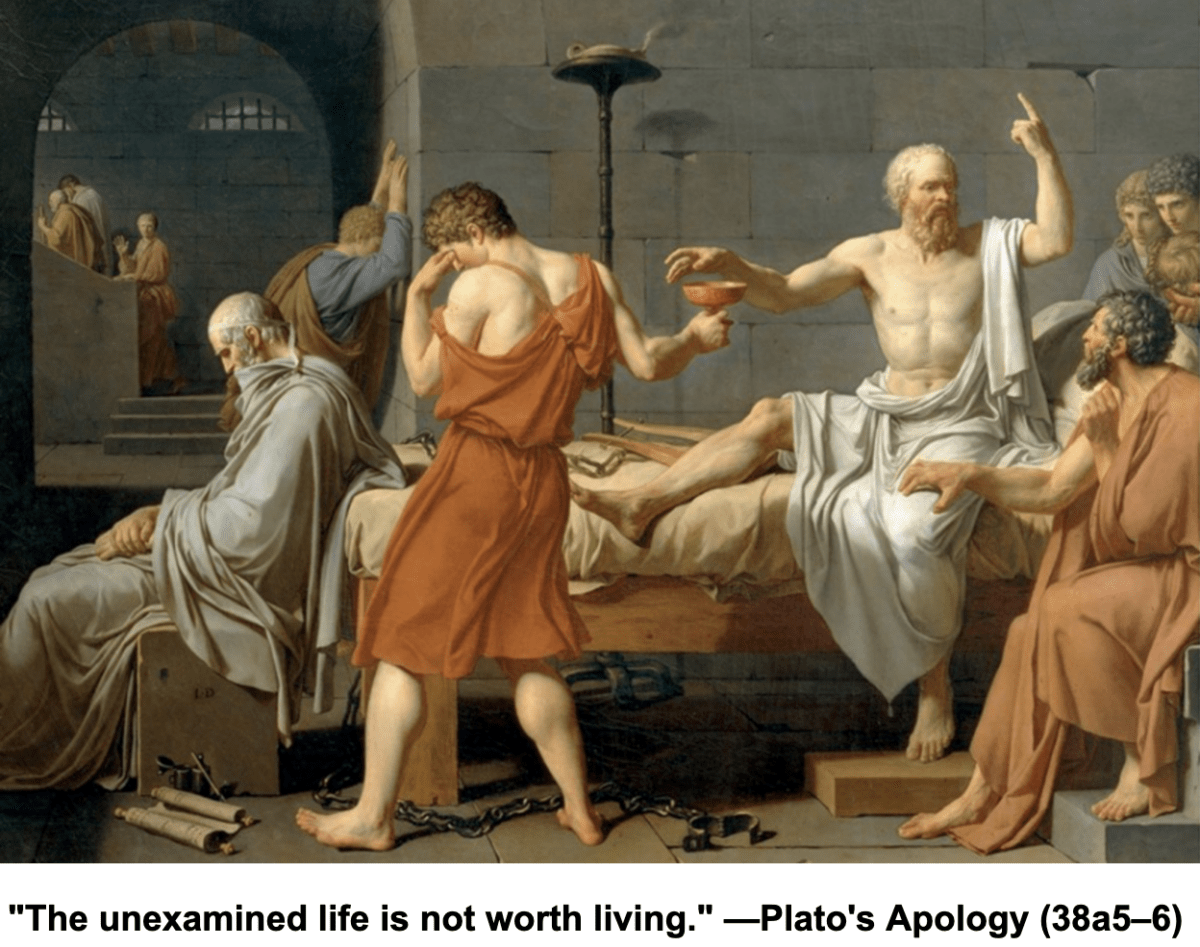Well, I’ll bet the title of this essay got your attention! I mean, when was the last time you read a post about incest on a website devoted to religious, scriptural and historical subjects? But what better place to find it than in the Book of Genesis where Lot is warned by some angels to take his family and get out of Sodom—a place known for its deviancy—before all hell breaks loose. Literally! His wife doesn’t make it—too much sodium in her diet, apparently—but his daughters do, though the first thing on their minds, once they have fled to the hills, is seducing their father. And you thought the Kardashians were strange!

Okay, enough with the humor. What’s really going here? Don’t bother consulting a church manual when it comes to troubling scriptural passages such as this one, since they invariably do one of two things: (1) ignore them (“nothing to see here folks; move along”), or (2) offer a convoluted explanation for the behavior of the protagonists.
Sure enough, the Gospel Doctrine Old Testament manual skips right over this story while its Institute counterpart explains Lot’s incestuous liaison with his daughters by saying [my paraphrase]: “Okay, what those girls did was immoral, but maybe we shouldn’t judge them too harshly since they might have thought their father really was the last man on earth and, therefore, their only source for children.”[1]

This is unpersuasive for two reasons: (1) the angels who visited Lot and his family in Sodom made it clear that they had come to “destroy this place,” not the entire planet; and (2) even if the daughters were concerned their father was the last male of the species, there was ample time to confirm that fact by traveling to nearby communities other than those slated for destruction to see if they were still intact before engaging in the very conduct that contributed to Sodom and Gomorrah’s annihilation.
Both approaches are wrong because each is the product of reading the scriptures literally. In other words, they are based on the faulty assumption that these events actually happened, that the author was writing history. He was not. He was telling a story. It’s all a myth—but a “myth” in the proper sense of the word, not as in modern usage, a falsehood, but as a sacred tale, one designed to teach.
Also, these stories are rarely told in a vacuum; rather, they are typically linked to what has gone before and foreshadow what is still to come. Consider Lot’s uncle, Abraham, who, by the laws of Jehovah, also committed incest when he married his half-sister, Sarah. And then there’s his son, Isaac, who married his second cousin, Rebekah, and his grandson, Jacob, who wed not one, but two, first cousins: Rachel and Leah. Moreover, to understand these texts, we must read them in their cultural context.
A common ideal of many ancient and tribal societies was maintaining a pure lineage—ancestral purity within the family. This was especially true among the ruling classes. But, as noted by Egyptologist John Romer, this invariably creates “strong tensions inside such family trees; the unresolved contradiction between incest and purity.”[2] The authors of the Old Testament resolved these conflicts by blessing some of these unions while cursing others.
In Abraham’s case, Jehovah approves. Twice Abraham tried to give Sarah in concubinage to foreign kings, and each time his efforts were thwarted by the Lord. Further, Sarah’s prolonged barrenness is lifted by angelic proclamation, yielding a pregnancy ordained by heaven. By contrast, his nephew’s seduction by his daughters is preceded by angels who foretell destruction. The unholy union is then shrouded by a “volcanic smokescreen of fire and brimstone of atomic proportions.” Someone does not approve.
To further underscore the Lord’s disfavor, the authors craft a not-so-subtle connection between the story of Lot and that of Noah’s family. Consider these striking parallels, as enumerated by biblical scholar, Peter Enns:
Noah:
- Humanity is sinful.
- The door of the ark is shut keeping out the wicked.
- The guilty are destroyed by God.
- Noah and his family escape.
- Noah gets drunk and his son commits a sinful act.
- Noah’s offspring (via his son Ham) is cursed.
Lot:
- Sodom and the “cities of the plain” are sinful.
- The door of the house is shut keeping out the wicked.
- The “cities of the plain” are destroyed by God.
- Lot and his daughters escape.
- Lot gets drunk and his daughters commit a sinful act.
- Lot’s offspring is cursed.[3]
Wait … how do we know they were cursed? Embedded in the final two lines of this story is the answer:
And the first born bare a son, and called his name Moab: the same is the father of the Moabites unto this day. And the younger, she also bare a son, and called his name Benammi: the same is the father of the children of Ammon unto this day.
Genesis 19:37-38.
“Moab” and “Benammi” are not nice names. The former means “From father” (me’ab in Hebrew), while the latter derives from the phrase presumably spoken by Ammon’s mother after his birth, “My dad’s son” (ben ‘ammi).[4] Each highlights the incestuous origins of the Israelites’ neighbors, the Ammonites and the Moabites, who were not their friends—to put it mildly. To the contrary, they were despised and cursed: Ammonites and Moabites were not allowed to “enter into the congregation of the Lord; even to their tenth generation….”[5]

This story employs what is known as an etiological device. That is, it explains the enmity between Israel and its two neighbors by inventing a cause for it—an incestuous liaison and its inevitable byproduct: hostile and unclean offspring with whom interaction and intermarriage was forbidden.[6] Rudyard Kipling also used etiologies, albeit for more benign purposes, in his Just So Stories, such as “How the Leopard Got its Spots.” You start with the end result—a big cat with spots—and then spin a tale to explain why you see what you see today.
Yes, the Ammonites and Moabites spoke a language similar to the Israelites’ and they did have a common ancestor, but they are described quite literally in the Bible as a bunch of bastards. Simply stated, the story of Lot and his daughters is nothing more than a nasty swipe at the Moabites and Ammonites.
Not only is this a more compelling interpretation of this scripture than our default scriptural literalism, it is also more sympathetic. Yes, this is propaganda, but it also tells us something important about Abraham’s time: in the ancient world, family and ancestral ties defined not only the individual but also nations, and their fate was often determined accordingly. Further, when a family or society’s story is constructed so as to trace its origins back to its mythological first parents, Adam and Eve, it creates a link with the divine, something we emulate with our temple ordinances.
Elder John Widtsoe, quoting Brigham Young, stressed the importance of approaching the scriptures with the goal understanding their context before attempting to apply them to our lives:
“Many Bible accounts that trouble the inexperienced reader become clear and acceptable if the essential meaning of the story is sought out. To read the Bible fairly, it must be read as President Brigham Young suggested: ‘Do you read the scriptures, my brethren and sisters, as though you were writing them a thousand, two thousand, or five thousand years ago? Do you read them as though you stood in the place of the men who wrote them?ʼ (Discourses of Brigham Young, pp. 197-8). This is our guide. The scriptures must be read intelligently.”[7]
In a similar vein, Elder James E. Talmage, cautioned members against trying to discredit science by distorting the meaning and purposes of our sacred texts. He categorically rejected the notion that the opening chapters of Genesis were ever “intended as a textbook of geology, archaeology, earth-science or man-science.” He urged the Saints “not to try to wrest the scriptures in an attempt to explain away what we cannot explain.” And he concluded by saying, “We do not show reverence for the scriptures when we misapply them through faulty interpretations.”[8]
Fundamentalist interpretations of the Standard Works not only distort their meaning; they also play into the hands of the enemies of organized religion. Literalistic textual constructions make it easy for atheists to mock and belittle those who seemingly reject scientific truths in favor of a God who sometimes condoned incest while other times turning a blind eye, who sanctioned the indiscriminate slaughter of the residents of Jericho, and who dispatched a bear to maul a bunch of children because they made fun of Eliseus’ shiny noggin. Worse, they can block the inspiration and spiritual insights that can only come when we accept the scriptures on their own terms, when we read them intelligently.
[1] Old Testament Student Manual: Genesis–2 Samuel, “Genesis 18-23: Abraham-Father of the Faithful,” (Church Educational System: Salt Lake City Utah: 2003), p. 77.
[2] John Romer, Testament: The Bible and History, (Henry Holt and Company: New York: 1988), pp. 33-34.
[3] Peter Enns, Phd., “Uh, That Sounds Familiar (Again): Noah and Lot in the Book of Genesis,” accessed on November 1, 2020.
[4] James L. Kugel, How to Read the Bible: A Guide to Scripture, Then and Now, (Free Press: New York: 2007), p. 130.
[5] Deut. 23:3 (KJV).
[6] Deut. 23:4-7; 8-9. (KJV).
[7] John A. Widtsoe, Evidences and Reconciliations, collectors’ ed. (Bookcraft: Salt Lake City, Utah: 1987), p. 128.
[8] James E. Talmage, “The Earth and Man,” address delivered in the Salt Lake Tabernacle, August 9, 1931 (from the Deseret News, Nov. 21, 1931, pp. 7,8).

It’s so amazing how when you let go of literalism bible stories take on a deeper, more complex meaning – not less. Thank you for sharing these insights. I feel like you pull away a curtain and let us see the “whole story”. I am always enriched by your writings.
Always worth reading.
Interesting and enlightening. “There is an abundance of evidence showing that marriages or sexual relations between members of the “nuclear family“ (i.e. parents, children) were common among royalty or special classes of priests since they were the representatives of divine on Earth” Incest wasn’t unknown or even shocking in certain groups of people at this time.” I think the genetic results of these marriages helped eradicate them.
I agree S Barnhart—when you remove the blinders of scriptural literalism, it’s amazing what you can discover. It’s like peeling away the layers of an onion: one discovery often leads to another.
Sadly, the more nuanced approach to the scriptures advocated John Widtsoe, James Talmage and Brigham Young was opposed by Joseph Fielding Smith, whose scriptural literalism ultimately carried the day, as our manuals reveal. And there’s little reason to believe that will change any time soon. Fortunately, for the serious student of the scriptures, there are many excellent books available by biblical scholars, such as Peter Enns, John Walton, and Bart Ehrman, along with a few by LDS authors, like Adam Miller and Julie Smith.
Thanks Dick and Karen. And I agree: once the royal families of old, and those they served, began to see that incestuous unions didn’t exactly produce the “best and brightest,” they ultimately decided the practice had to stop.
They not only didn’t produce the “best and the brightest” they managed to emphasize genetic defects and diseases such as Hemophilia. I just read an interesting book about the granddaughters of Queen Victoria. The intermarriage of the European royal lines led to descendants with a number of genetic disorders. Think of what it did in Russia when the Tsar’s son had hemophilia. Bring on Rasputin and revolution.